Down a deserted alley and under a bridge in Los Angeles’ Arts District a new exhibition has brought a lost art legend back to life. In 1987 Austrian pop star and art impresario Andre Heller brought together some of the greatest living artists of the twentieth century to create an art amusement park, Luna Luna. Part installation, part performance art, and part carnival, Heller’s park sought to bring people to high art in an amusing way and have luminaries of the art world create something in the real world. Running for three weeks that summer in Hamburg, Germany, three hundred thousand people attended the event making it a huge success, and a tour was excitedly planned. However, due to legal issues the entire fair would end up sitting in forty-four shipping containers in rural Texas for the next thirty-five years.
A few years ago a team of conservators funded by the rapper Drake bought all the containers, sight unseen, and began restoring Luna Luna for the show here in Los Angeles. Now the world can see these amazing works by the likes of Salvador Dali, Keith Haring, David Hockney, and Basquiat and an art legend can get its due. In bringing together Luna Luna, Heller wanted to create a liminal space where people could act freer and more open than in their daily lives, allowing that headspace to open them up to the art. He sought to use contemporary art to create an air of absurdity and fun that spoke to deeper themes where anything could happen, creating an atmosphere of the carnivalesque. In doing so he brought together streams in Western art that date back to Medici celebrations in the sixteenth century, the idea of total art from the Victorians, Dada cabaret performances, fifties art happenings, and the contemporary concept of immersive art experiences. Luna Luna was an important milestone and moment in contemporary art that was denied its place in history, it was the culmination of what came before and a window on what was to come that can now be explored and appreciated to its fullest.
Commissioning the most famous artists of the day to create temporary works for celebrations and performances didn’t originate with Heller, in fact it is a tradition that dates back hundreds of years to Renaissance Italy. According to Giorgio Vasari, the father of art history, Leonardo da Vinci, Raphael, and Michelangelo all designed floats, stages, costumes, and tableaus for the ducal courts of Italy. The quality of the paintings and sculptures in these works were as high as any in the great churches even though they were only meant to be temporary, sometimes lasting only a few days before being torn down. Usually allegorical in theme, artists often used these opportunities to push their art forward or try new design schemes that would have been too risky in a permanent commission. In England this tradition would develop into the Masques, elaborate half party half plays that were written and designed by the biggest artists of the day for the court to perform for themselves. Today nothing of these works exist and we only have eye witness accounts and a few engravings to know they happened at all. This tradition continues in Luna Luna with the triumphal arch designed by Sonia Delaunay as the entrance to the fair as well as having each artist create a temporary structure in their unique vision.
Temporary works would also be commissioned each year for the celebration of Carnival, the orgiastic celebration carried out in Catholic countries in the weeks before Lent. During these celebrations people were encouraged to indulge the senses and the rules of society were temporarily suspended or upturned. Andre Heller wanted to bring this energy to the entirety of Luna Luna and especially into his personal contributions to the fair through his work entitled “Wedding Chapel”. Here around a platform rises a proscenium, made of two triangles one gray and one black, above which are mounted two abstract depictions of humanoid heads, one with wild hair the other with a top hat. Together they hold a heart above the center of the platform, two shrubs flank the platform and if one chooses to get married there they would receive a certificate. During the fair people could and did marry everything, a photographer their camera, a cyclist their bike, all in the spirit of absurdity and mocking lifes normal rules. The certificates said,
“Marry a friend or marry a foe; marry a shoe or marry a crow.
Marry whomever or whatever you wish,be it a bike or be it a fish.
For love is love at Luna Luna, even if you love a tuna”
Written in a light hearted nursery rhyme style and meant to amuse, the underlying message does speak to the importance of love as the center of marriage rather than government, tradition or religion. This was radical for the time, in 1987 it was the height of the AIDS crisis and illegal for queer people to get married, this chapel was speaking out for an upturning of society’s rules in the name of love. Using the freedom of Carnival as activism many gays and lesbians would tie the knot at the chapel during Luna Luna’s three week run. Heller wanted the chapel to make visitors participants in the event and part of the art like the Masques of England had done centuries before.
In the later half of the nineteenth century several cultural shifts predicted the creation of events like Luna Luna. The creation of the World's Fairs in the mid-nineteenth century is one such example, where creatives, inventors, and artists came from around the world with their best creations and newest innovations to impress and be inspired. Like the festivals of the renaissance these fairs were temporary and most of the works from them are now lost. Both art nouveau and art deco aesthetics can trace their origins to the World Fairs and many famous artists were commissioned to create pieces or entire structures for them. In fact the figure on the front of Salvador Dali’s mirror dome for Luna Luna was part of a piece commissioned for the New York World's Fair of 1939. Artists — both up and coming, and established — came together with their best work for Luna Luna as well, creating an exposition of their moment like the great World Fairs before.
Luna Luna also exemplified the idea of “total art,” the concept of works that utilized all the arts into one cohesive whole and fully immersed all the senses at once. Throughout the nineteenth century artists sought to make works of total art and endlessly debated which ones did and did not meet the standard. In creating Luna Luna, Andre Heller openly stated that he was seeking to create a work of total art, and to that end there were rides and performers and food and music all working together to create a complete experience. He chose the artists specifically and coordinated their designs to create a cohesive whole.
The final important development of the nineteenth century was the transformation of artists from creators of individual pieces to broader designers, as fields like architecture, furniture design, theatrical design and more became blurred into an art world marked by an artist’s individual style. Artists like Alphone Mucha and artisans like Louis Comfort Tiffany became household names with examples of their work across the world. By the late twentieth century this had become the bread and butter for celebrated artists with almost every artist featured in Luna Luna designing for film, music videos, high fashion, and more. Two of the younger artists, Basquiat and Keith Haring, had recognizability to the public as central to their ethos, both coming from the graffiti art scene.
Having a dedicated and recognizable iconography that he then shaped for retail, night club, and activist spaces, Keith Haring was a perfect example of this type of artist. Calling Luna Luna a “dream project” he created a carousel and painted several tarps as well as designing the shirts that were sold at the fair. Haring painted all the pieces by hand, but had the carousel seats built by Peter Petz, a German ride designer, from his designs. The seats of the carousel are in the shape of Haring's iconic figures in deep purple, green, and red and the inner walls and ceiling are yellow with his figures painted on top in black. One of the figures is a self portrait of the artist and the outer band of the carousel is purple with Haring's figures filled with lines, an orange version of one of his stick people sprouts from the top with a crown. The colors and the shapes of the figures create a childlike sense of joy and fun perfect for the fair with Haring’s trademark imagery pulling you into his world. The seats invite you onto the ride in the same way the figures on the tarps invite you to move and interact, something the performers began doing at the fair. Having distilled his aesthetic down to its bare parts he was then able to apply it to multiple mediums and contexts creating branding that endures to this day, and an aesthetic that is instantly recognizable as his.
Another movement that informs the creation of Luna Luna is the art “Happenings” of the nineteen fifties and early sixties. Growing from the avant garde cabarets of the Dadaists, which first brought modern artistic principles and theory out of the gallery and on stage, Happenings deconstructed the idea of a “performance” and were more of performative events. Coined by artist Allen Kaprow in 1959, Happenings are hard to define because each one was completely unique. Generally, Happenings are theatrical performances held within a gallery environment, utilizing light, sound, slide projections, and spectator participation to guide, yet not completely control, a distinctive experience. Made up from discarded images and remnants of past culture they grew from a desire to make meaning from the world after the horrors of World War II. This desire paralleled Andre Heller's affinity for art and amusement parks. Happenings aimed for an immersive art experience akin to total art, crafted collaboratively with the spectator rather than directed at them. This movement laid the groundwork for the subsequent growth of performance art and cultural events such as Burning Man. Serving as a deliberate, intellectual, and artistic counterpart to the British Masque, Happenings embodied a Carnivalesque rebellion against expected norms in public space, promoting freedom. This ethos inspired Heller's vision for Luna Luna, where wandering performers engaged with spectators, turning installations into stages for audience participation.In Heller’s chapel the spectator became the art and each piece had unique sounds and music that accompanied it as designed by the artist and which are included with the show today.
Jean-Michel Basquiat’s contribution to Luna Luna best brings together all of the trends that inspired the show and spoke to the future it promised. Called “Painted Ferris wheel with music” Basquiat and Heller worked out the design for this ride in New York, and it was executed by assistants in Germany, the only time Basquiat ever did this. This harkens back to the way many Renaissance artists worked with their workshops and assistants, and the allegorical nature of the images used recalls Renaissance trends as well. The piece itself is a white ferris wheel, a ride invented for a World's Fair, with images painted on top. These images include a panel that reads “Jim Crow” with the copyright symbol, a nickel “tail” that shows the Jefferson plantation juxtaposed with the misspelling of “ E pluribus Unum” , a map of America, as well as images of drinks and lightning. These and the other images on the ferris wheel connect with Basquiat’s frequent themes of violence, power, the body, classical myth, and racism in America. The nickel imagery speaks to the opposition between America’s stated values and its actions, and the ride seeks to remind audiences that many public places like amusement parks were segregated as little as twenty years before Luna Luna. The turning of the ferris wheel reflects the cyclical nature of history and racism that we are all “riding.” He only agrees to do the piece if it included the music “Tutu” by his hero Miles Davis adding to the sensory impact of the piece that echoes notions of total art, and the active participation of a spectator that reflected the Happenings of the fifties and sixties.
Luna Luna was ahead of its time in trying to bring together high art and amusement parks, celebrity and spectacle, meaning and absurdity. It foresaw the current world of immersive art experiences and art festivals like Burning Man, yet it has remained largely unknown to the general public. Now after a loving restoration it is finally getting its due and once again we can see the vision of Andre Heller and the artists he brought together in the summer of 1987. In crafting Luna Luna, Heller wanted to create a carnivalesque atmosphere with contemporary art, where the public felt free to play and become part of the performance. In doing so he was bringing together streams going back to the renaissance, yet creating a new synthesis that spoke to his time and the future. A union of art and amusement that we can now enjoy.

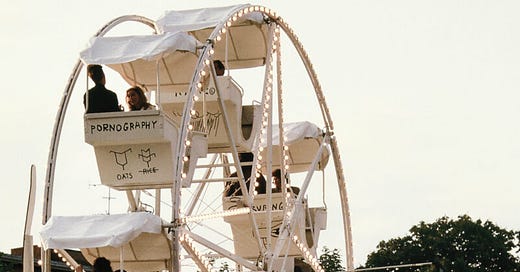


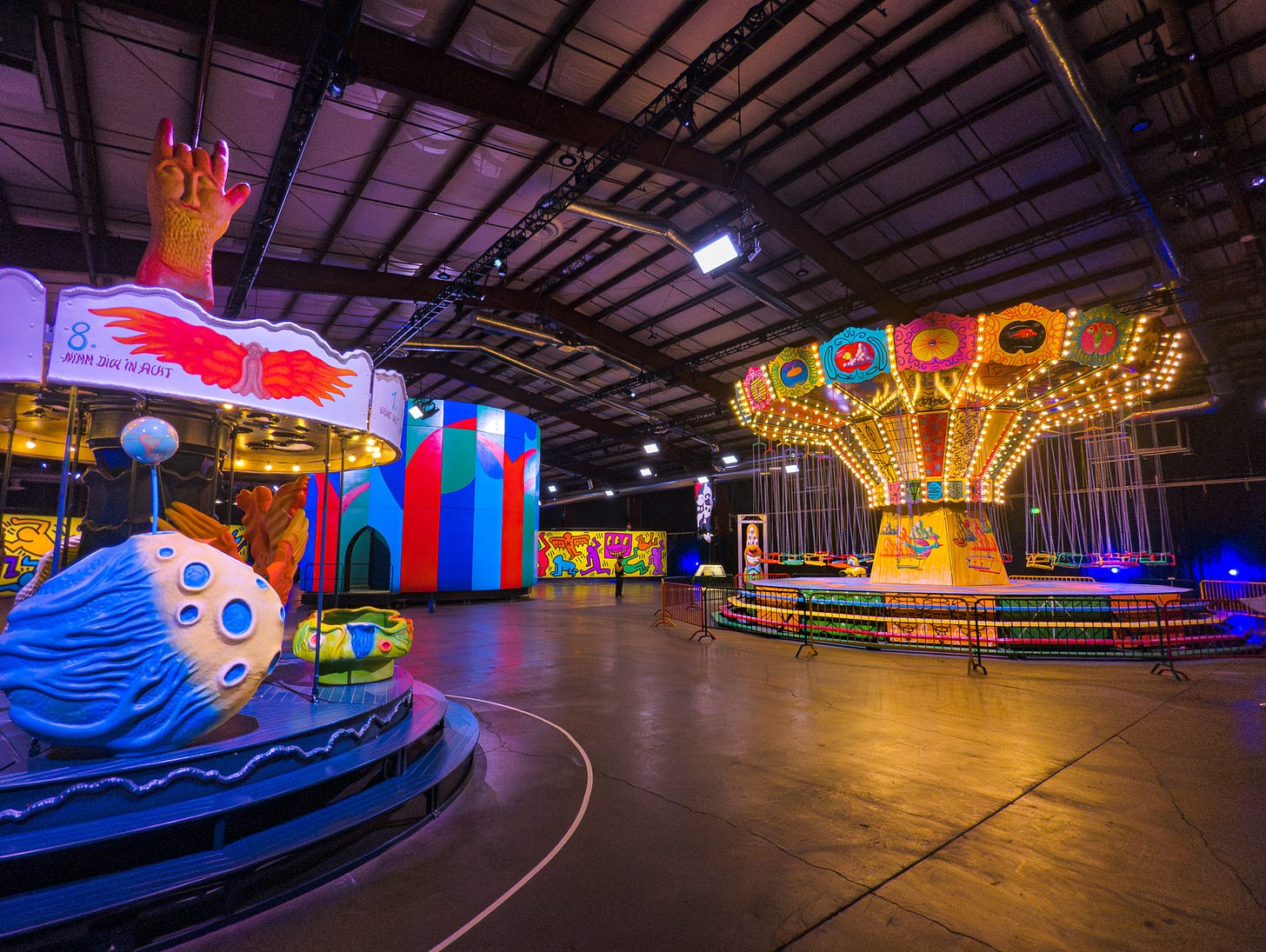

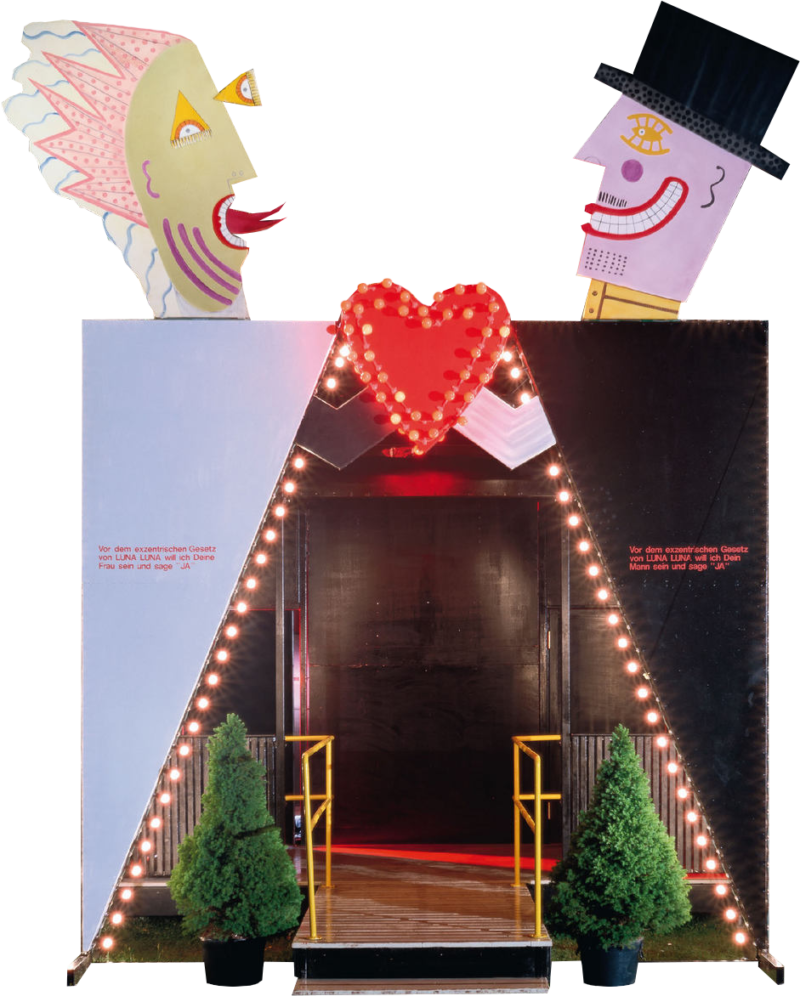
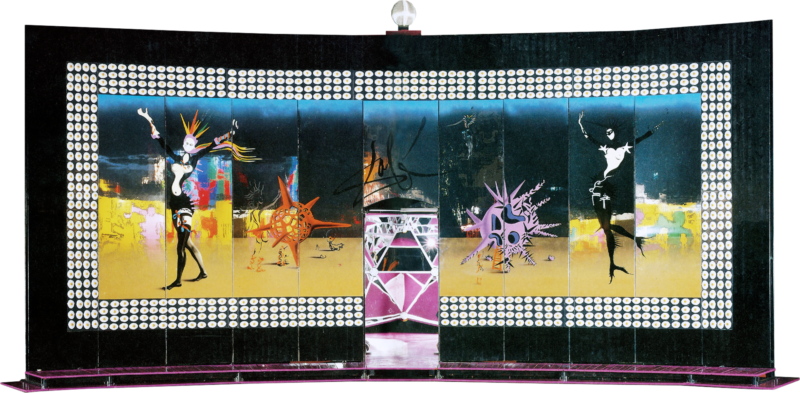
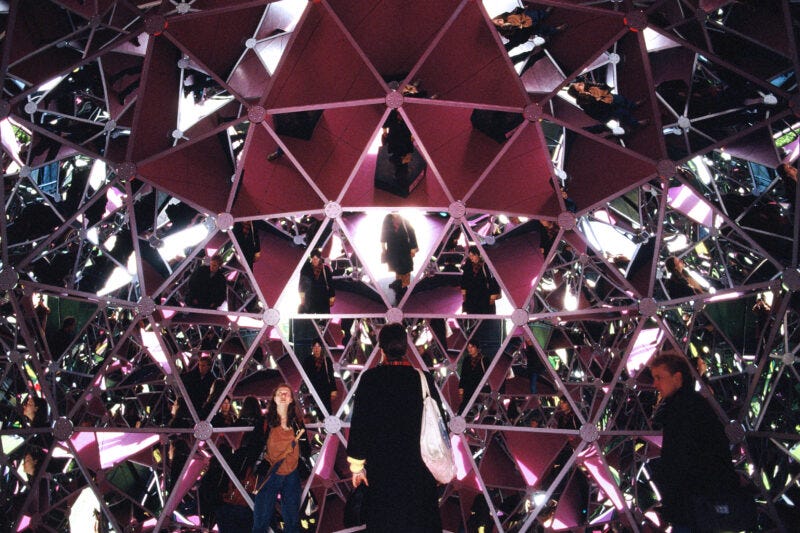
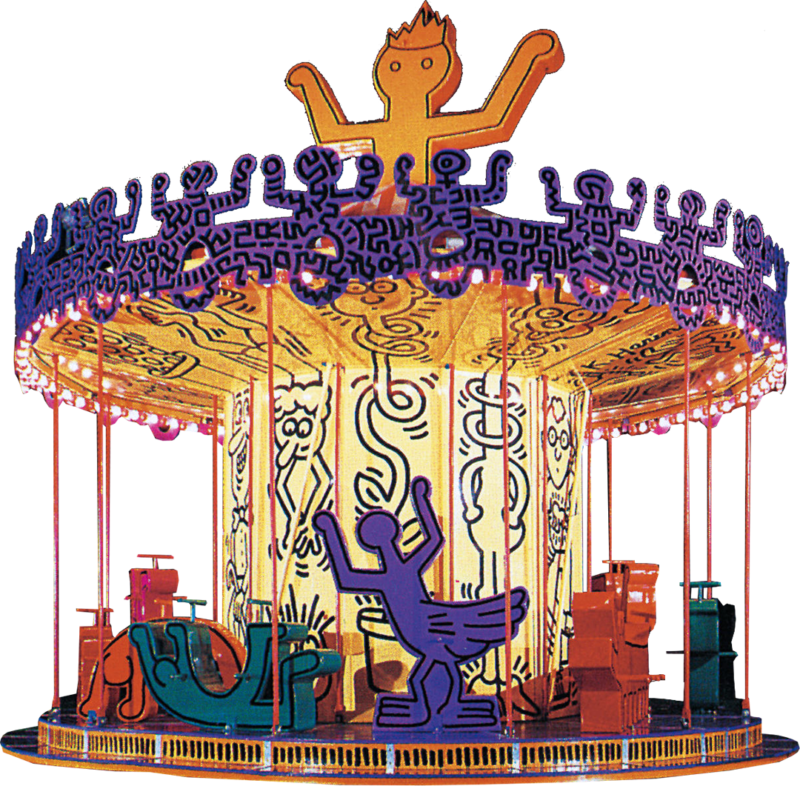
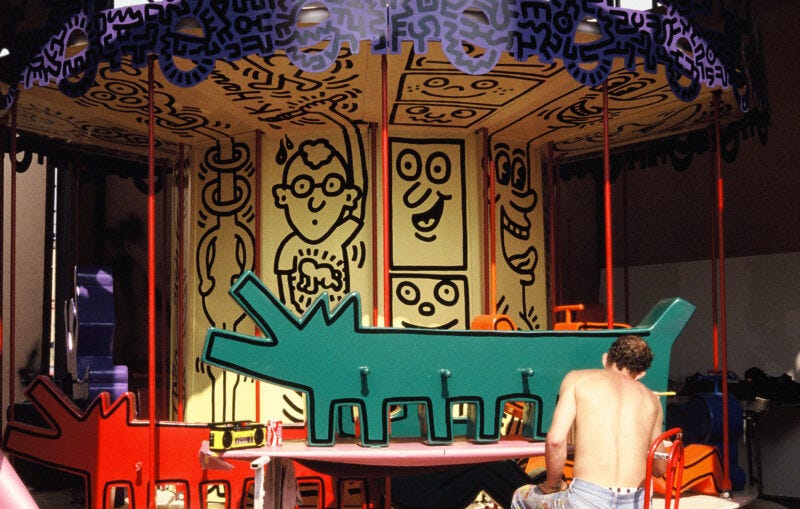
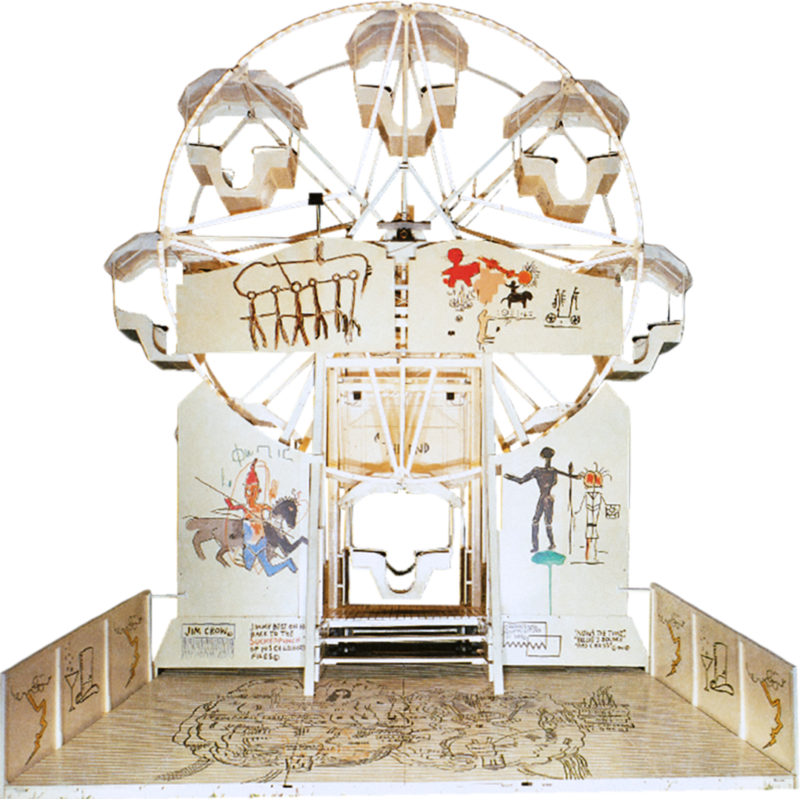

Thank you for this very thorough description of a fascinating exhibition. I really hope to get to see it before it's closed.